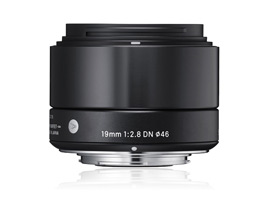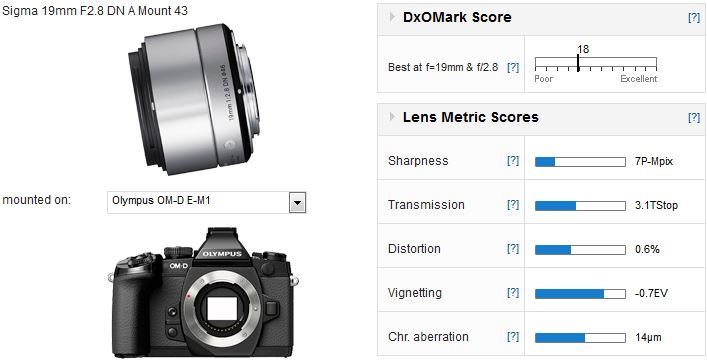Introduction
With an APS-C image circle, Sigma’s DN series is specifically designed for mirrorless models from Sony and the smaller MFT format adopted by both Panasonic and Olympus. Originally launched as EX types with f2.8 apertures, the firm has refreshed the original two focal lengths (a wide and standard) designating them as their prestigious Art series and added a third, a 60mm short telephoto (reviewed previously).
As the wide-angle of the three, this 19mm A series lens is an upgrade of the earlier EX model of the same focal length and, with an MFT mount, is the equivalent to a 38mm f2.8. Although this model features a new cosmetic appearance with a thin metal skin and minimalist exterior, internally this lens features 8 elements (with no less than three aspheres) in 6 groups, like its predecessor.
Paradoxically, this 19mm model is larger than the 30mm model and measures 45.7mm in length (as opposed to 40.5mm of the 30mm focal length), focuses down to 20cm and weighs 160g. Although it lacks stabilization, the 19mm f2.8 DN A remains sensitively priced at $199.
On the Olympus OM-D E-M1 the Sigma 19mm f2.8 achieves a DxOMark score of 18 points. Although good it’s not great putting it midway between the Lumix G 20mm f1.7 ASPH and Olympus M.Zuiko Digital 17mm f2.8 with DxOMark scores of 22 and 15 points, respectively. However, given those models’ peak sharpness scores of 11P-Mpix and 6P-Mpix, the score of 7P-Mpix for the Sigma is on the low side. While center sharpness is best at full aperture it doesn’t really improve when stopped down and has generally poor uniformity across the field. Not only that but lateral CA is a little higher than we would like with it being just visible in the periphery, sides and corners of the frame.
Compared with its predecessor the new model shows some marginal improvement in optical quality, particularly at full-aperture, however the gains are very minor. Transmission and control of chromatic aberration are also very slightly improved, and Sigma has also lowered the distortion, suggesting the firm has fine-tuned some of the optical components. However, in real world terms it would be difficult to tell.
While it’s encouraging to see Sigma upgrading the quality of their lenses, much of that on this occasion is cosmetic. However, this model also shows some slight improvement in image quality, mostly at full aperture. Sharpness isn’t everything though and at $199 it remains competitively priced when compared with rival offerings.







DXOMARK encourages its readers to share comments on the articles. To read or post comments, Disqus cookies are required. Change your Cookies Preferences and read more about our Comment Policy.